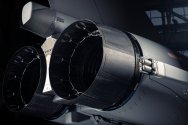Also, for what it's worth, some carbon fiber composites can withstand temperatures above 2000℃.
The fibres are not the problem in this respect, but the matrix resins will typically decompose above 200°C. For very high temperatures is possible to embed the fibers in a matrix also of carbon instead of the usual epoxy. This makes it a very heavy material however that you would consequently use only in applications where even metals could not survive (Shuttle nose cone and wing leading edges).





